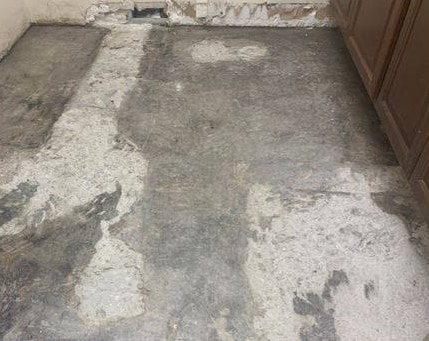Top 3 Mistakes Commercial Spaces Make When Making the Change! |
| Why are commercial environments making the change? There are a lot of advantages of LVT/ LVP. Commercial resilient products are low maintenance, without the waxing requirements of its predecessor, VCT. Spills are easy to wipe away with a paper towel or mop up with a micro-fiber mop. The variety of patterns allow for a minimal look or more variation to hide spills that aren't immediately addressed. When looking at making the change, most evaluate the products themselves, not their current environment. Isolating the material without evaluating the space can lead to undesirable results. Here are 3 things that should be considered before making a change from Carpet to LVT/ LVP to avoid unwanted results: |
1) Acoustics
One of the first noticeable changes in the environment of a space are the acoustics: how loud are the background noises of a space? Are there a lot of people in open spaces having phone conversations? Is there traffic noise? How many interruptions are there from people coming and going with doors opening and closing? Sound travels several ways: directly to your ears or it can bounce off surfaces until it dissipates. Soft surfaces help to minimize the sounds bouncing around, so as sounds travel to the carpet, they are dissipated by that soft surface. Removing that soft surface and replacing with a hard surface can create a louder environment than what occupants are used to hearing.
If acoustics are not considered before making the change from carpet to LVT, the noise and disruption level in a workspace may have a negative effect. If there are other soft surfaces in the space- ceiling tiles, fabric furniture, drapery, etc., the change to a hard surface may not be much of a change at all.
One of the first noticeable changes in the environment of a space are the acoustics: how loud are the background noises of a space? Are there a lot of people in open spaces having phone conversations? Is there traffic noise? How many interruptions are there from people coming and going with doors opening and closing? Sound travels several ways: directly to your ears or it can bounce off surfaces until it dissipates. Soft surfaces help to minimize the sounds bouncing around, so as sounds travel to the carpet, they are dissipated by that soft surface. Removing that soft surface and replacing with a hard surface can create a louder environment than what occupants are used to hearing.
If acoustics are not considered before making the change from carpet to LVT, the noise and disruption level in a workspace may have a negative effect. If there are other soft surfaces in the space- ceiling tiles, fabric furniture, drapery, etc., the change to a hard surface may not be much of a change at all.
| 2) Level Subfloors All flooring forms to what it is being installed on, so what is under your existing carpet? Are there any additional layers of flooring hidden beneath the existing carpet? Do you have concrete or wood subfloors? How level are your floors? Do you have a lot of sunlight that will highlight subfloor imperfections? One advantage of carpet is that it can hide a multitude of subfloor sins, which prevent you from knowing exactly what is going on underneath. The only way to find out what is going on is to remove that carpet; however, partnering with a flooring specialist allows for additional investigating and planning on the front side to know more about what to expect on the final installation. Additional floor preparation may be needed and planned for before making the switch to make sure your new floor is as smooth as possible. |
3) Moisture
Whether moisture is spilled from the top or hiding in the subfloor, moisture can be a problem for LVT/ LVP. Traditional roll carpet is a breathable surface, allowing moisture to move through the material to evaporate; however, LVT/ LVP can trap moisture between the subfloor and the product, which can mean big problems. Care should be used in selecting an LVT/ LVP for kitchens, water filling stations, or other locations that have a lot of moisture and/or spill potential. Moisture that sits too long on the surface of the flooring can seep between seams and get trapped under the flooring. This can lead to adhesive and/or flooring failure. Subfloors, both wood and concrete, should also be tested prior to replacement for moisture levels to determine if moisture is present. Natural springs, poor drainage, missing vapor barriers, and other factors can cause moisture to reside in subfloors. Checking the moisture levels in the subfloor can prevent future issues with the LVT/ LVP floors.
Whether moisture is spilled from the top or hiding in the subfloor, moisture can be a problem for LVT/ LVP. Traditional roll carpet is a breathable surface, allowing moisture to move through the material to evaporate; however, LVT/ LVP can trap moisture between the subfloor and the product, which can mean big problems. Care should be used in selecting an LVT/ LVP for kitchens, water filling stations, or other locations that have a lot of moisture and/or spill potential. Moisture that sits too long on the surface of the flooring can seep between seams and get trapped under the flooring. This can lead to adhesive and/or flooring failure. Subfloors, both wood and concrete, should also be tested prior to replacement for moisture levels to determine if moisture is present. Natural springs, poor drainage, missing vapor barriers, and other factors can cause moisture to reside in subfloors. Checking the moisture levels in the subfloor can prevent future issues with the LVT/ LVP floors.
0 Comments
Your comment will be posted after it is approved.
Leave a Reply.
Lucas Commercial Flooring Group, Inc.
If you would like your project featured on our website, please let us know!
Archives
January 2024
November 2023
August 2023
July 2023
June 2023
February 2023
September 2022
July 2022
May 2022
February 2021
December 2020
November 2020
October 2020
September 2020
July 2020
January 2020
October 2019
July 2019
June 2019




 RSS Feed
RSS Feed




